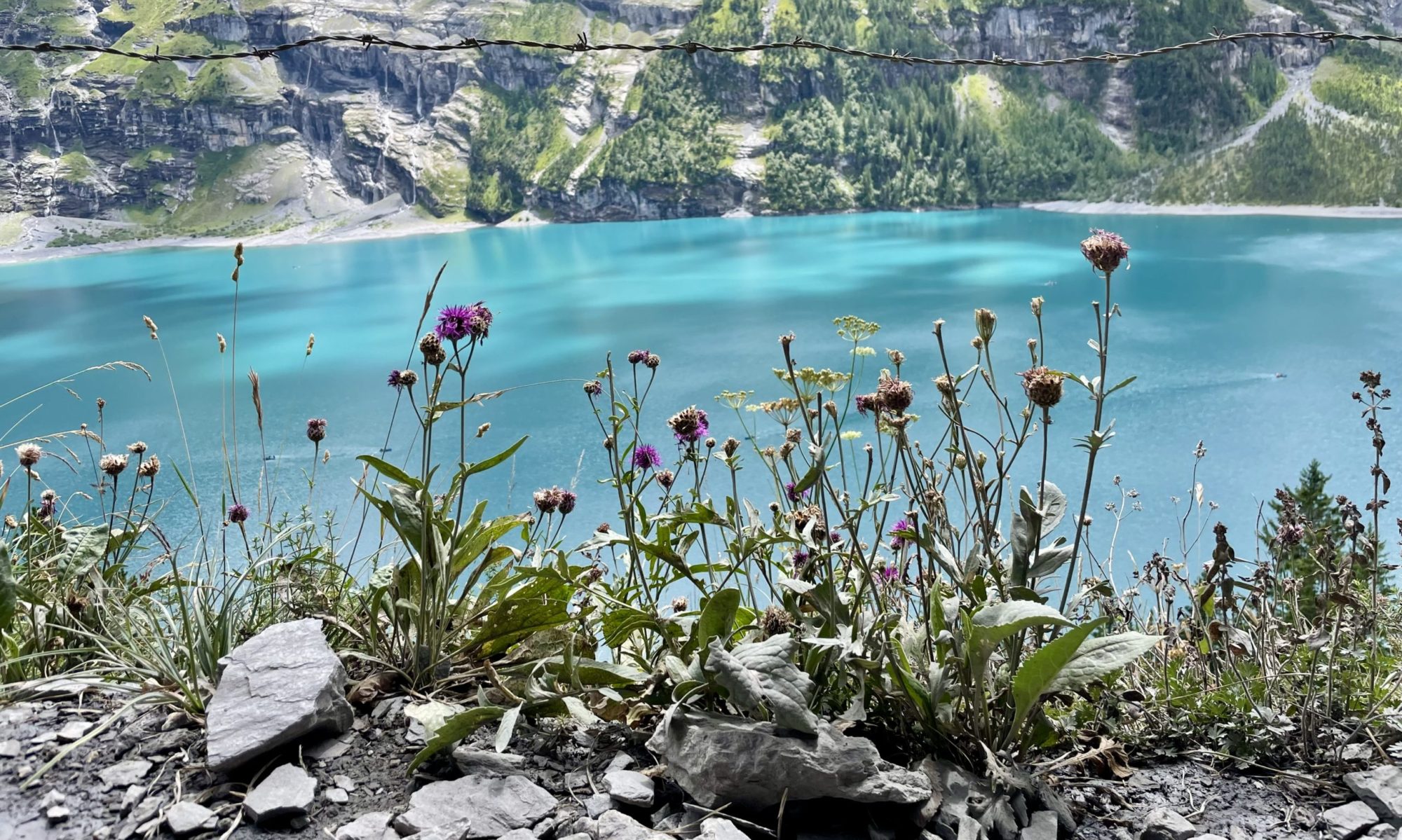On my daily run yesterday, trying to free my head from the lockdown-pandemic-social distancing thoughts, I focused my senses on the woods around me and I immediately realised how greener everything looked, compared to the day before. Obviously the change had not happened in the previous 24 hours, but until then I had been focusing more on the flowers, especially the bluebells, that are marking the unfolding of spring.

Chlorophyll
The bluebells flowers have now started to pass, and the purplish ambiance has been taken over by many different shades of green that evoke the freshness and tenderness of new life. You might have learned in school that leaves are green because they contain chlorophyll, a green pigment that is able to use energy from sunlight to create sugars from carbon dioxide (CO2), releasing oxygen in the air. But why is chlorophyll green? Pigments, by definition, are molecules that give a particular colour to the tissue where they are. Biologically, a pigment is also usually involved in vital processes. Colours that we see, originate from light. When light crosses an object in its path, it can be absorbed, or reflected.
The whole spectrum of visible light is white. If an object reflects the totality of light that strikes it, it looks white, like snow. If it absorbs all the light, it looks black. When you wear a black coat in winter on a sunny day, you can enjoy the warmth of the sun on your back, because the black fabric is absorbing the energy of the sun. The different colours that we see correspond to a different wavelength at which the energy fluctuates. The smaller the wavelength, the higher the energy.

Rainbow
If we deconstruct the visible light, by letting it pass through a prism, or droplets of water, we can see the colours that make up the visible light. It’s the rainbow. Each colour corresponds to a range of wavelengths, from the smallest violet, to the biggest red. Energy waves with bigger wavelength than red are not visible. They are infrared, then microwave, then the biggest of all: the radio waves. On the opposite side of the visible range, wavelengths smaller than the visible violet, are also invisible. First come the ultraviolet, then the X-rays then the smallest of all: the gamma rays.
Pigments are molecules that absorb light, but only at a specific wavelength, the rest of the light is reflected. Chlorophyll is green, because it absorbs blue and red light, and reflects green wavelengths to our eyes.

So the chlorophyll pigment absorbs red and blue light, and reflects the green light, making it appear green. What we consider green is the reflected light between 520 and 570 nm, although in some languages and culture, there is no distinction between the names for blue and green. They are considered shades of the same colour.
Green vs. green
There are almost 300 variety of greens that we, at least some of us, are able to distinguish. The greenness of a leaf is partly influenced by the amount of chlorophyll and chloroplasts (the organelle containing the chlorophyll), which in turns is species specific. However, mostly the leaf green shade is determined by the presence and abundance of other pigments. To be able to absorb light at other wavelengths than what chlorophyll allows, and thus increase the photosynthetic efficiency, leaves usually contain carotenoids, pigments that absorb blue light and reflect yellow light, and anthocyanins, pigments that absorb in the blue-green light and reflect red light. When in autumn there is not enough light to photosynthesise, chlorophyll is the first pigment to be degraded. Carotenoids and anthocyanin pigments become dominant and leaves appear yellow, red and orange, depending on the proportion of the various pigments.
Chlorophyll also comes in two varieties called a and b. Chlorophyll a is the main one, present in all leaves of all plants. It absorbs light from orange-red to violet blue and is responsible for most of light absorption, while chlorophyll b is a booster allowing plants in darker places to maximise their photosynthesis capacity. Leaves containing chlorophyll b are darker than the ones containing only chlorophyll a.
So next time you have a stroll in the woods, have a look at all the shades of green and admire the beauty and complexity of each one of them.

